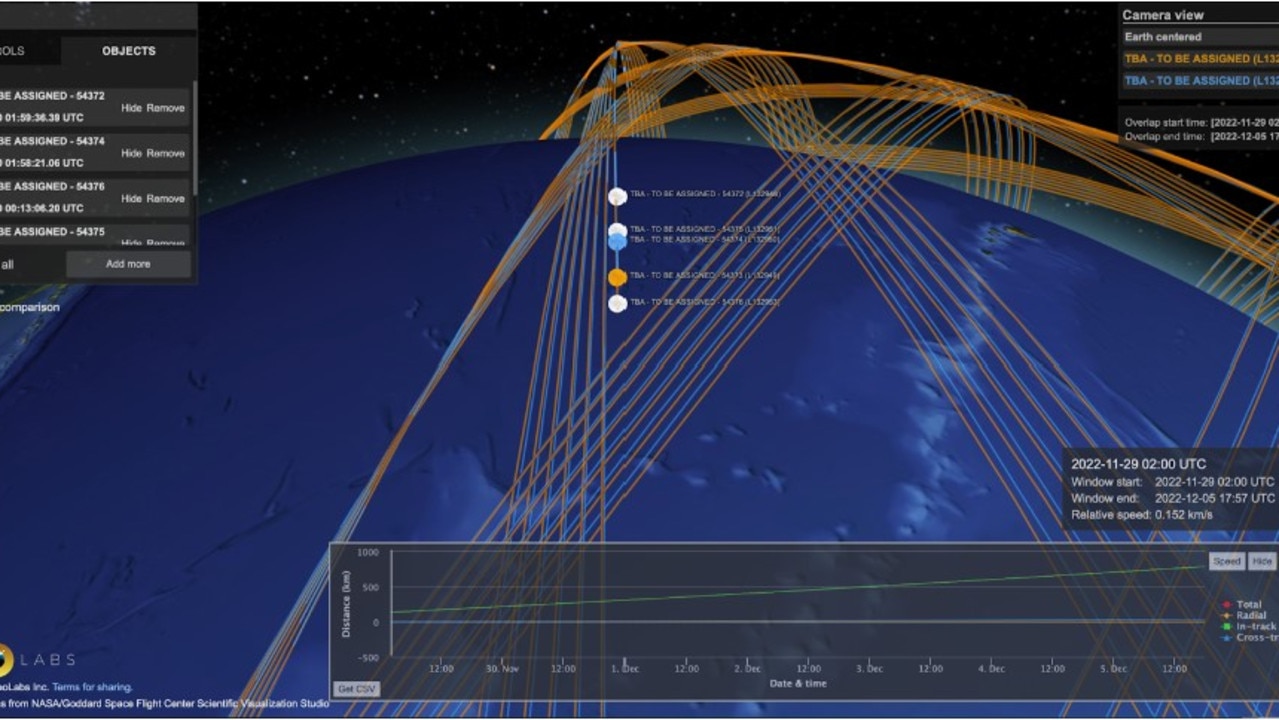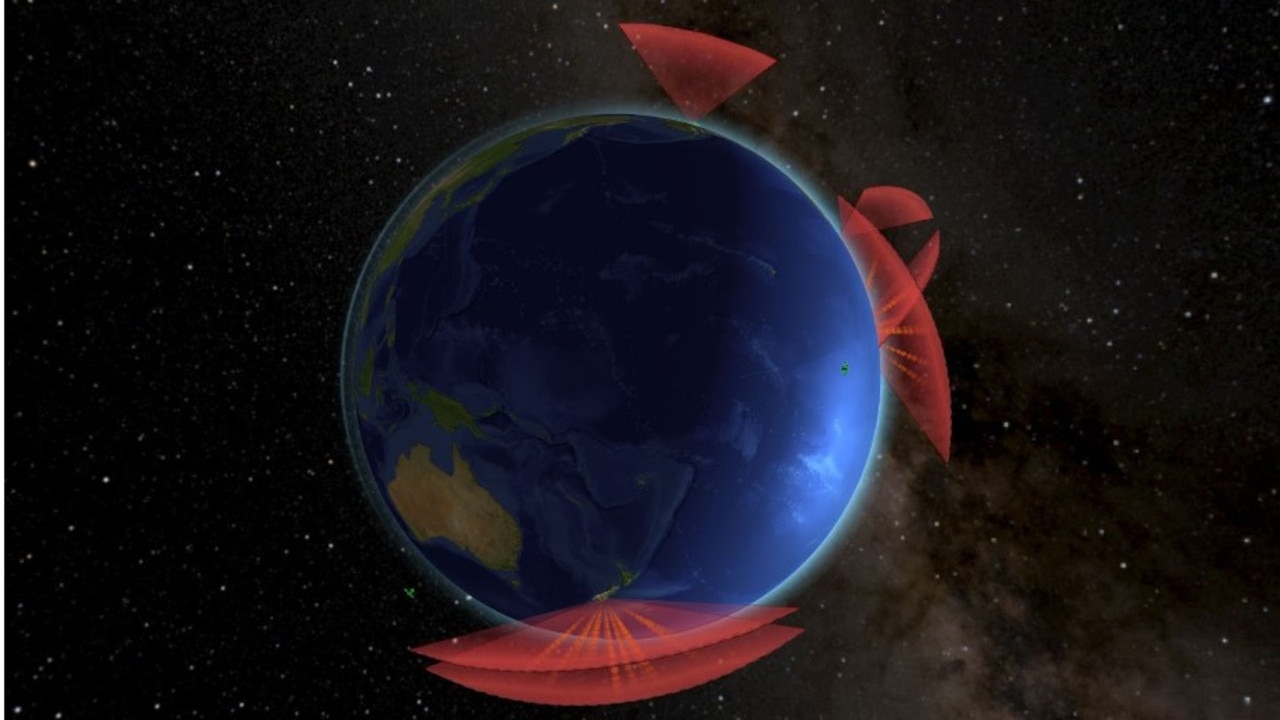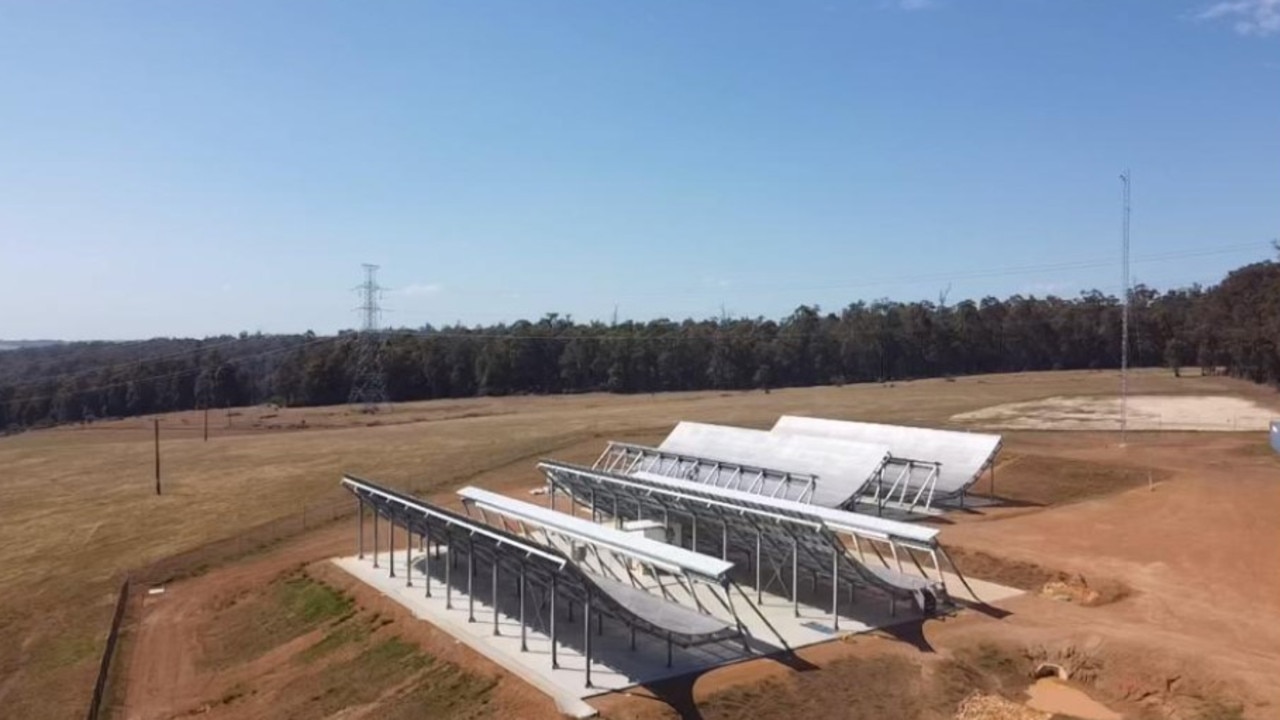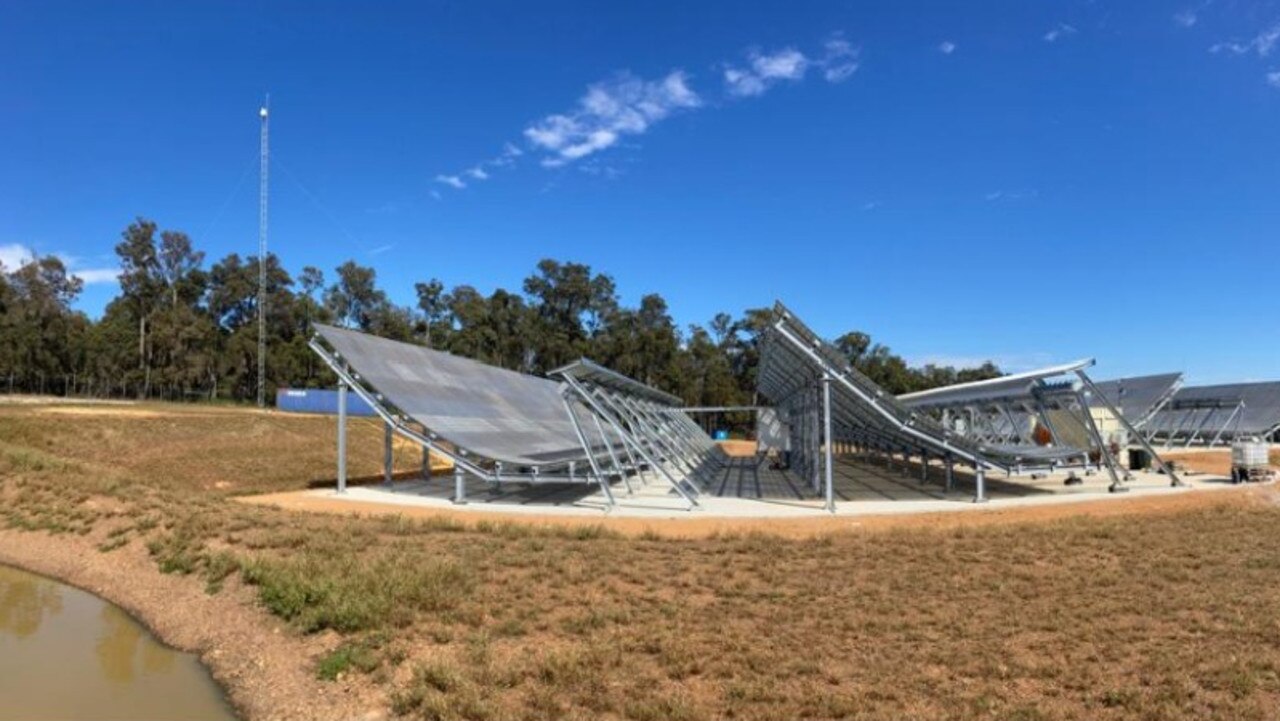‘That’d be a disaster’: Worries over China’s new move in space
China’s latest moves in the space race may be setting a disturbing “new normal” that could be very bad news for the rest of us.
Tensions are high in orbit. Russia is threatening to destroy anything it deems is assisting Ukraine. China is accusing Elon Musk of breaking the rules.
But the launch of a set of new spy satellites demonstrates a disturbing “new normal” in the space race.
“What they say and do is two different things nearly all the time,” LeoLabs Australia director Terry van Haren said.
The low-Earth orbit (LEO) awareness radar operator is about to commission its first Australia-based system in WA. It’s planning to build another in the NT.
“Every cover story they use, we have to treat with a grain of salt in terms of international co-operation,” the former Air Commodore said.
One such example is the November 27 launch of a Long March 2D rocket from Xichang Launch Centre in southwestern China. Official reports said it was carrying a single Earth observation satellite. But space tracking systems are now monitoring five objects.
“This is becoming routine behaviour,” Mr van Haren said. “They will surprise us with more objects and different payloads than we expected. Those sorts of things.”
The invasion of Ukraine and soaring tensions over Taiwan and the South China Sea add a sinister dimension to such surprises.
In December last year, Russia fired a missile and successfully destroyed the defunct Cosmos-1408 spy satellite. The 2.2-tonne device was blasted into more than 1500 fragments over 10cm in size. There are tens of thousands of smaller, untrackable pieces.
“This was a show of force against the world,” he said. “It demonstrated the Russians could go kinetic in space if they were pushed. And that’d be very bad. That’d be a disaster.”
That’s why civilian, academic, government and military space observation systems are nervously watching the skies.
“The warning signs are suspicious launches and potentially new counter-space activities,” Mr van Haren said. “We’d probably see evidence of these things pretty quickly.”


Carrier killers
China’s space authorities announced the latest launch was carrying a Yaogan 36 observation satellite. The exact composition of the five objects at roughly 500km altitude is not confirmed. But it likely includes at least three of the dual-use (military and civilian) surveillance systems and discarded rocket body parts.
“China typically describes Yaogan satellites as being designed for uses including gathering scientific data, conducting land surveys and monitoring agriculture,” Mr van Haren said. “However, the secrecy surrounding the satellites leads analysts outside China to believe that the satellites also have military capabilities”.
The Yaogan satellites carry a mix of optical, radar and signal observation systems. They are optimised to track ships.
Beijing has invested significant effort in building an array of ballistic missiles that can deploy hypersonic warheads against warships thousands of kilometres from its coasts. These have been dubbed “Carrier Killers” by analysts who believe they’re intended to deter – or destroy – US nuclear-powered aircraft carriers.
“The best weapons in the world are useless unless aimed accurately,” retired US Air Force Lieutenant Colonel Thomas McCabe wrote in the Journal of Indo-Pacific Affairs.
“[This] requires a sophisticated intelligence, surveillance and reconnaissance (ISR) system to detect and track targets, preferably in as close to real-time as possible.”
LeoLabs, Mr van Haren says, is now tracking 128 Yaogan satellites in low-Earth orbits. More are being launched every few months.
“China wants full coverage around the world and of all its approaches,” he said. “And once you get it, you want to sustain it.”


The price of freedom …
Russian satellites are tailgating US satellites. Chinese satellites are making complex, close-range manoeuvres with each other.
Some shift without warning. Others do inexplicable things.
“We have seen some rocket bodies break up for unexplained reasons. And then we see all these test and development activities going on in orbit. These are routine,” Mr van Haren said. “But there’s more of them than there used to be. And I think they have as much to do with political intent as they do in terms of capability development.”
Orbit is changing. Fast.
It used to be the exclusive domain of militaries and national governments. And satellites were few and far between.
Now there are some 5000 active satellites in LEO. And at least 4000 of them are commercial.
“It’s one big sea of commercial, civil and military activities occurring at the same time where the behaviour of one has a significant impact on all the others,” Mr van Haren said. “One of our jobs in some respects is to try and protect commercial operators by watching for any misbehaviour.”
Civilian and commercial agencies are taking up the slack.
The US Department of Defence wants to hand over its orbital traffic control role to focus solely on the exploding amount of military activity.
And that means more transparency.
“It’s changing towards an enterprise approach, something more commercial. That’s great for companies like us,” he said. “I think space situational awareness and traffic management will go the same way as air traffic and shipping control by the end of this decade.”
… eternal vigilance
“You can’t hide in space anymore,” Mr van Haren said. “There’s just too many sensors all around the world. Every nation has some sort of sensor grid. And many companies have sensors in many nations. So forget about trying to hide your existence, or what you’re doing, in space.”
But surprises remain problematic.
Satellites are forced to dodge. Others suffer interference with their sensor and communications arrays.
And in the commercial world, that means money is lost.
But nations and corporations continue to jostle for influence.
This week, China accused SpaceX of “breaking space traffic safety rules”. It’s pointing to this as an excuse for its own satellites to do the same.
“That’s just how they operate,” Mr van Haren said. “Poor old SpaceX. Because their Starlink constellation is now such a common and effective system, they are in the sights of both the Russians and Chinese. Which is a real concern for them.”
That includes jamming, hacking – and disinformation.
But there is now enough international and intercorporate tracking data to clarify and corroborate such accusations.
“We’ve gone back over the data on many of those claims from China,” he said. “Basically, in all our assessments, there was no risk to any Chinese activity.”
And this increasingly open pool of data is making space transparent.
“We can be a public information source. We can call out bad behaviours,” Mr van Haren said. “I’m an optimist in that regard. I’ve seen it work in other domains. You see the disinformation narrative from an aggressor start to change or basically have no value whatsoever. That makes them think twice. And that’s a deterrent.”
Jamie Seidel is a freelance writer | @JamieSeidel






